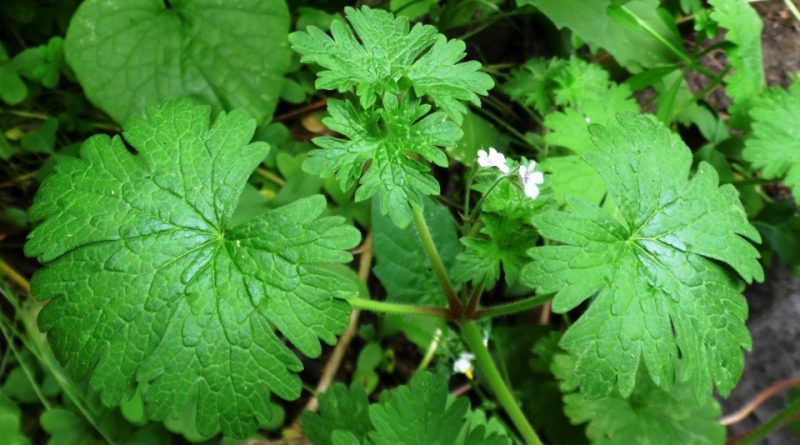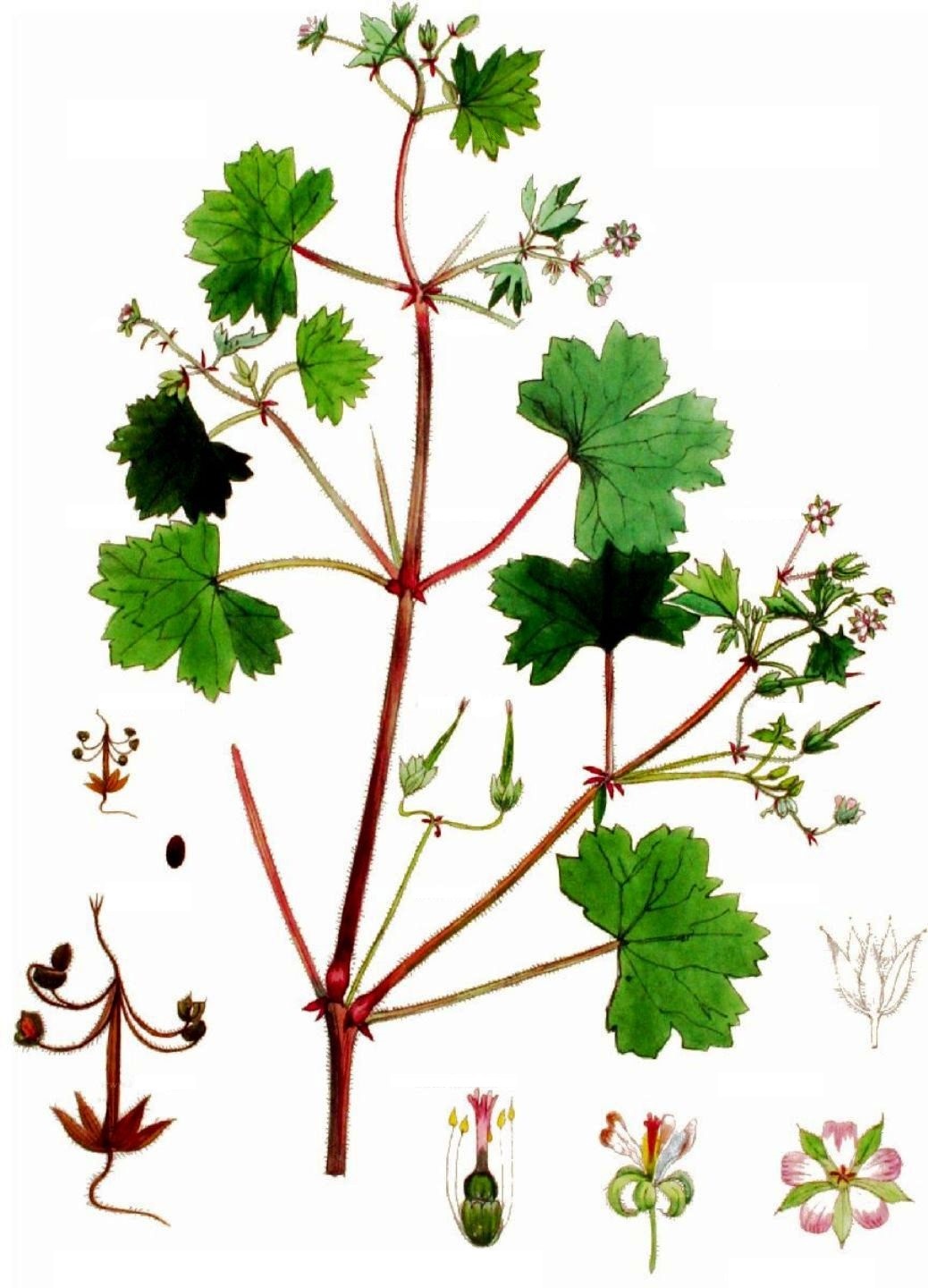Geranium rotundifolium
Geranium rotundifolium
The round-leaved geranium (Geranium rotundifolium L., 1753) is an annual herbaceous species belonging to the Geraniaceae family.
Systematics –
From a systematic point of view it belongs to:
Eukaryota Domain,
Kingdom Plantae,
Subarign Tracheobionta,
Spermatophyta superdivision,
Magnoliophyta Division,
Magnoliopsida class,
Subclass Rosidae,
Order Geraniales,
Geraniaceae family,
Genus Geranium,
G. rotundifolium species.
The terms are synonymous:
– Geranium rotundifolium f. albiflora (Rouy) Briq .;
– Geranium rotundifolium f. albiflora Rouy in Rouy & Foucaud;
– Geranium rotundifolium var. albiflorum (Rouy) Graebn. in Asch. & Graebn .;
– Geranium rotundifolium albifora Rouy in Rouy & Foucaud;
– Geranium rotundifolium var. Weston album;
– Geranium rotundifolium var. angustifolium (Rouy) Graebn. in Asch. & Graebn .;
– Geranium rotundifolium var. angustifolium Rouy in Rouy & Foucaud;
– Geranium rotundifolium var. arenicolum Sennen;
– Geranium rotundifolium var. barcinonense Sennen;
– Geranium rotundifolium var. caespitulosum (Lojac.) Graebn. in Asch. & Graebn .;
– Geranium rotundifolium var. caespitulosum Lojac .;
– Geranium rotundifolium var. elongatum Sennen;
– Geranium rotundifolium var. genuinum Graebn. in Asch. & Graebn .;
– Geranium rotundifolium var. genuinum Rouy in Rouy & Foucaud;
– Geranium rotundifolium var. glabrescens Murr;
– Geranium rotundifolium var. hungaricum Simonk .;
– Geranium rotundifolium var. malvifolium (Scop.) Mutel;
– Geranium rotundifolium var. minus Weston;
– Geranium rotundifolium var. pinnatifidum Picard;
– Geranium rotundifolium var. strictum Picard;
– Geranium rotundifolium var. subrotundum (Ehrh. ex Hoffm.) Graebn. in Asch. & Graebn .;
– Geranium rotundifolium f. thurstonii Druce;
– Geranium rotundifolium var. trichospermum (Sanio & Borbás) Graebn. in Asch. & Graebn .;
– Geranium rotundifolium var. trichospermum Sanio & Borbás;
– Geranium rotundifolium f. umbellatum R. Berger.
Etymology –
The term Geranium comes from the Greek γεράνιον gheranion geranium in Dioscorides, derived from γέρανος ghéranos gru: due to the fruits similar to the beak of cranes.
The specific epithet rotundifolium comes from round rotundus and folium leaf: with rounded leaves.
Geographic Distribution and Habitat –
The round-leaved geranium is a plant native to Eurasia and North Africa and present as far as the Himalayas and East Asia. However, it is a predominantly Mediterranean species of ancient introduction at the edge of the range and present, in Italy, in all regions.
Its habitat is the ruderal and arvense one, in cultivated fields, gardens, vegetable gardens and above all vineyards, on clayey soils rich in bases and nitrogen compounds, sometimes decalcified and subacid, below the mountain belt, up to 1,200 m.
Description –
Geranium rotundifolium is an annual herbaceous plant that reaches a height of about 0.40 m.
It has bifurcated, prostrate or ascending stems, red in color and densely pubescent.
The leaves have a semicircular lamina, palmatifid, divides into 5 lobes, each of which is tridentate.
The flowers are small, with 1.5 mm sepals with evident apical tip (mucrone), whole petals 4 mm longer than the calyx, more or less rounded at the apex, of a pinkish-violet color with whitish mouth.
The flowering period is from May to October.
The fruit is an erect schizocarp (polachenarian), 16-18 mm long. with 5 smooth, brown mericarps of 2.5-3 x 1.5-1.7 mm. Rostrum of 12-13 mm, with patent hairs. Reticulated seeds, brown of 1.8-2 x 1.2 mm.
Cultivation –
Geranium rotundifolium is a plant that is harvested in its natural state for local use as a medicine.
It grows in its natural state on any moderately fertile soil and in a sunny position.
Propagation occurs by seed with sowing to be carried out in spring in the seedbed. The transplant can take place when the seedlings are large enough to be handled, in the summer.
The plant can also propagate by division of the tufts in the spring or autumn period. The larger clumps can be replanted directly into their permanent locations, although it is best to settle the smaller clumps and grow them in a cold greenhouse or nursery until they root well.
Customs and Traditions –
The plant has medicinal properties and can be used as an astringent, diuretic.
It is a plant little used in modern herbal medicine and of which there are few bibliographic notes but it is occasionally used for its astringent properties.
This plant contains tannins, bitter substances and essential oils.
Preparation Method –
It is recommended to use all parts of this plant, including the roots and the plant can be harvested anytime from late spring to early autumn and is usually used fresh.
Guido Bissanti
Sources
– Acta Plantarum – Flora of the Italian Regions.
– Wikipedia, the free encyclopedia.
– Useful Tropical Plants Database.
– Conti F., Abbate G., Alessandrini A., Blasi C. (ed.), 2005. An annotated checklist of the Italian vascular flora, Palombi Editore.
– Pignatti S., 1982. Flora of Italy, Edagricole, Bologna.
– Treben M., 2000. Health from the Lord’s Pharmacy, Advice and experiences with medicinal herbs, Ennsthaler Editore.
Warning: Pharmaceutical applications and alimurgical uses are indicated for informational purposes only, they do not represent in any way a medical prescription; therefore no responsibility is taken for their use for curative, aesthetic or food purposes.


